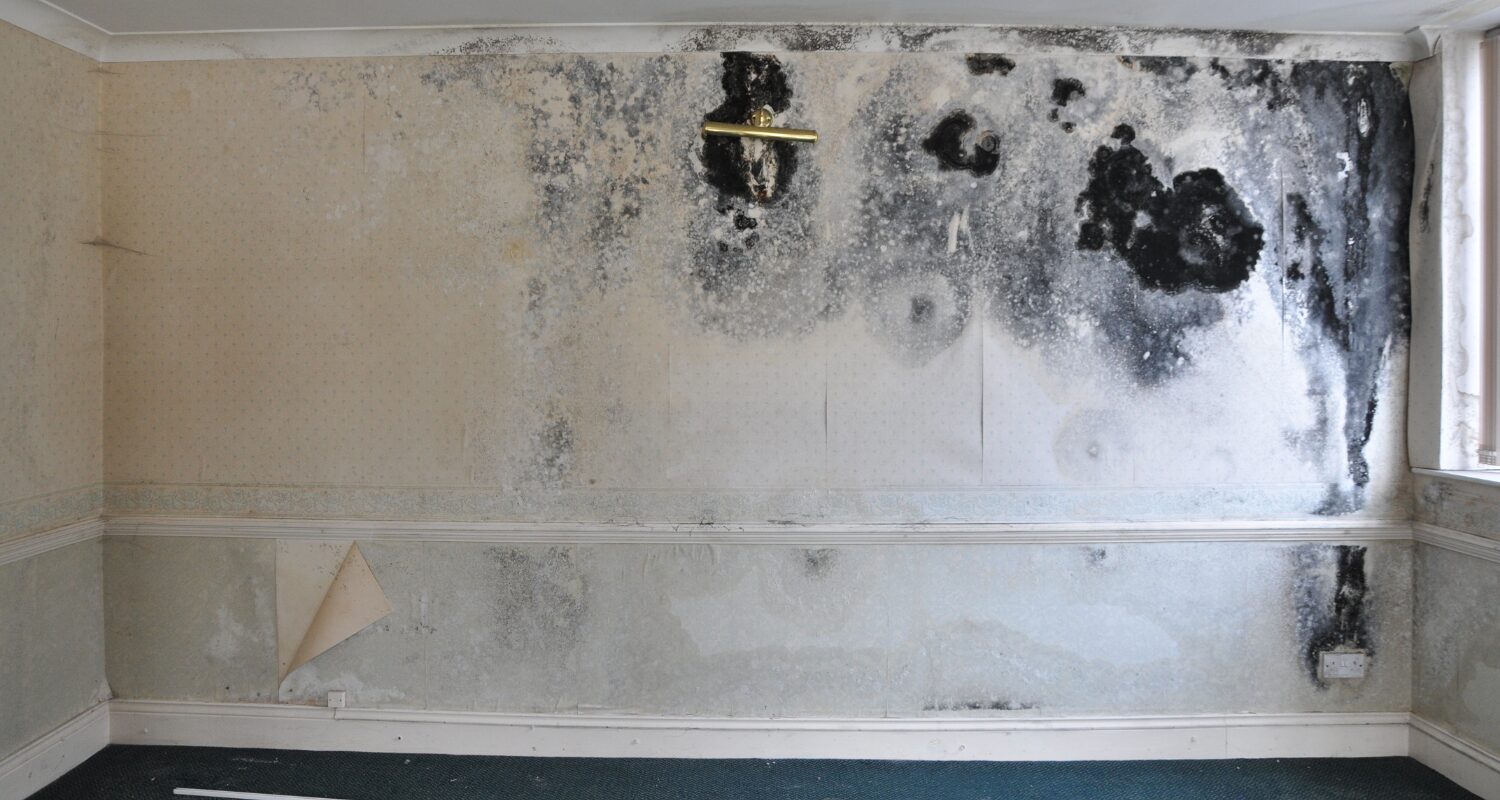
How Do I Remove Mould In My Apartment? Tips On How To Get Landlord To Remove Mould
By: 911 Water Damage Experts
Mould in your apartment isn’t just an eyesore—it’s a potential health hazard and a sign of underlying problems with your living environment.
This article dives into effective ways to remove mould, prevent its return, and ensure landlords take responsibility for addressing mould issues.
Let’s get right into it!
Understanding Mould Growth
Mould thrives in areas with excessive moisture, poor ventilation, and organic materials like wood or drywall. Common causes include leaking pipes, roof damage, and condensation from inadequate insulation. Canada’s long winters can exacerbate this issue due to indoor humidity combined with poorly ventilated spaces.
Black mould (Stachybotrys chartarum) is infamous for its toxicity, but other types, like Aspergillus and Cladosporium, are also prevalent. Each can pose serious risks to your health and home. Be on the lookout for musty odours, discoloured patches on walls or ceilings, and peeling paint. Chronic respiratory issues, headaches, and fatigue are also telltale signs of mould exposure.
Why Is Mould Dangerous?
Mould poses significant health risks and can damage your apartment’s structure. Health Canada reports that mould exposure can cause allergies, asthma, and even infections in vulnerable individuals.
Health Risks Associated With Mould
Prolonged exposure can lead to:
• Chronic respiratory issues.
• Skin irritation or rashes.
• Worsening asthma symptoms.
Impacts On Building Structures
Mould weakens drywall, wood, and insulation, potentially leading to costly structural repairs. Left unchecked, it can decrease the value of your apartment and make it uninhabitable.
Legal Responsibilities Of Tenants And Landlords

In Canada, both tenants and landlords have obligations to maintain safe and healthy living environments.
Tenant Obligations: Tenants must report leaks, spills, or other sources of excess moisture promptly. Failing to notify your landlord may absolve them of liability.
Landlord Responsibilities: Under Canadian housing laws, landlords are responsible for providing habitable living conditions. This includes addressing mould caused by structural issues like leaky roofs or plumbing.
Preparing For Mould Removal
Before tackling mould, it’s important to understand the scope of the problem.
Identifying The Source
Pinpoint where the moisture is coming from. Is it a leaky pipe, condensation on windows, or something else? Fixing the source is key to successful mould removal.
Tools And Supplies You Need
Stock up on:
• Gloves and protective masks.
• White vinegar or hydrogen peroxide.
• Scrub brushes and disposable cloths.
DIY Mould Removal Methods
Small-scale mould infestations can often be addressed with simple household remedies. Vinegar kills most types of household mould, while baking soda helps deodorize the area. Spray undiluted vinegar onto the affected surface, let it sit for an hour, then scrub with baking soda and water. Always wear gloves and a mask to prevent inhalation of mould spores. Ventilate the area by opening windows and using fans.
When To Call Professionals
For extensive mould infestations or cases involving black mould, it’s best to consult mould removal professionals. If the mould covers more than a square metre or has penetrated walls and ceilings, it’s time to call experts. Professional remediation is often necessary for safety and compliance. Professional mould removal in Canada costs between $500 and $6,000, depending on the severity and location of the issue.
How To Get Your Landlord Involved
Landlords are legally obligated to address mould issues caused by structural deficiencies. Take clear photos and write detailed notes about the problem.
Include dates and any communication with your landlord. Be professional but firm. Outline the problem, provide evidence, and refer to the landlord’s legal obligations.
Preventing Future Mould Growth
Prevention is always better than cure. Simple changes can make a big difference. Use a dehumidifier to maintain indoor humidity levels below 50%. This is especially crucial during Canada’s wet seasons. Keep windows open when cooking or showering, and ensure vents are clear of obstructions.
Tenant Advocacy And Support
If your landlord refuses to address mould, there are resources to support you. Groups like the Advocacy Centre for Tenants Ontario (ACTO) offer legal advice and resources for tenants dealing with negligent landlords.
FAQ
What Should I Do If My Landlord Refuses To Remove Mould?
Document the issue and file a complaint with your local rental authority.
Is Mould Dangerous To My Health?
Yes, mould exposure can cause respiratory issues, allergies, and other health problems.
How Can I Prevent Mould From Returning?
Control indoor humidity, improve ventilation, and address leaks promptly.
Can I Remove Mould With Bleach?
Bleach can kill surface mould but is ineffective on porous materials like drywall.
Is It Expensive To Hire A Professional?
Costs vary but typically range from $500 to $6,000 in Canada, depending on severity.
Can Mould Affect My Mental Health?
Yes, studies suggest that living in mouldy environments can contribute to anxiety and depression.
Are Landlords Legally Obligated To Remove Mould?
Yes, in Canada, landlords must provide safe, habitable living conditions, which include addressing mould.
Can Mould Damage My Belongings?
Yes, mould can ruin furniture, clothing, and other personal items.
Is Mould Removal Covered By Insurance?
This depends on your renter’s insurance policy. Check the terms and conditions for details.
How Quickly Does Mould Spread?
Mould can start growing within 24–48 hours in the right conditions.
Conclusion
Mould isn’t just a nuisance: it’s a serious issue that requires immediate action. By understanding your rights, taking preventive measures, and holding your landlord accountable, you can ensure a safe and healthy living environment.
If you have any questions about our article “How Do I Remove Mould In My Apartment? Tips On How To Get Landlord To Remove Mould” or need water damage restoration services contact us at 1-833-WE-DRY-IT or connect with us on social media.
Related Posts
Mould Removal Restoration Articles
5 Signs You Have Mould Growing In Your Walls
“Can I Remove Mould Myself?” Our Mould Removal Experts Have Answers
7 Must-Know Reasons Why You Should Get A Mould Inspection Before Buying A House
Does Mould Attract Bugs? Yes And Here’s What Kind And Why
How To Remove Mould From The Attic [Mould Prevention Tips Inside]
How Rain Causes Mould Growth-Prevention Tips Included
Must-Know Tips: How To Remove Mould In Your Basement
Water Damage Restoration Articles
What you can expect from a fire damage restoration company
Water damage prevention tips from the most common problems we’ve seen
Top causes of water damage in commercial buildings and how to find them
Must-know water damage tips: What to do after your house floods
What does good water damage restoration look like?
DIY water damage restoration and the hidden dangers
How to choose the right water damage company
Flast floods: What to do before, during and after a flash flood
What to do when your attic leaks?
Fire Damage Restoration Articles
How to clean up after a house fire
Fire damage restoration checklist
Fire damage tips: 6 hazards property owners miss
How smoke from fires can negatively affect your health
What are the most common causes of house fires?
10 helpful smoke damage cleaning tips
Related Water Damage Services
Fire damage restoration services
Water damage restoration services
Emergency cleanup services
Mould removal services
Weather damage services


